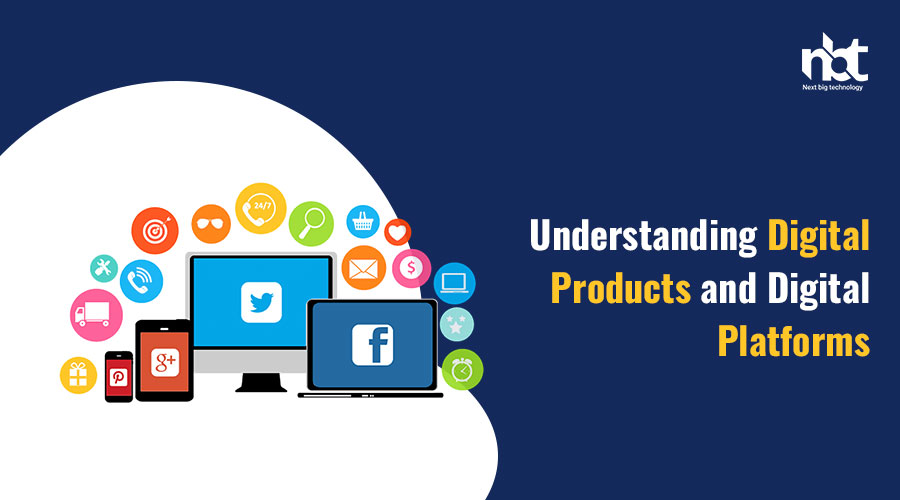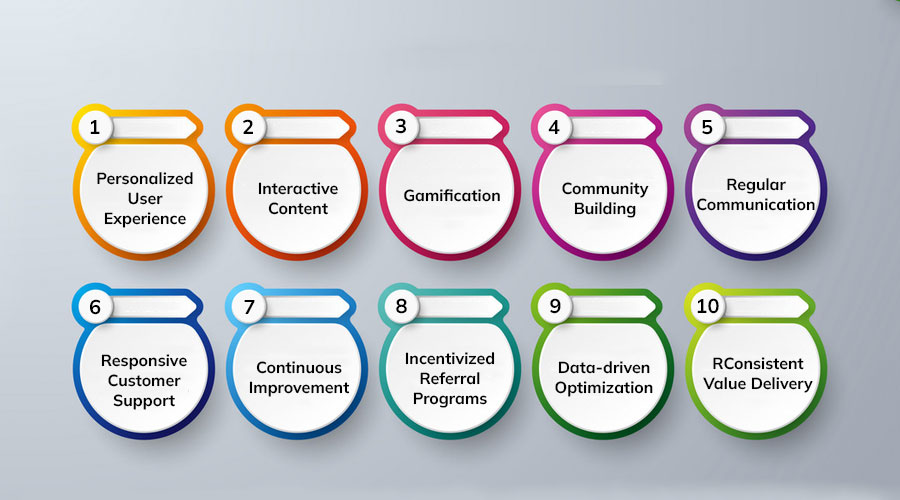Table of Contents
Introduction to Digital Products and Platforms
In today’s fast-paced digital era, the landscape of commerce and interaction has undergone a revolutionary transformation. Traditional brick-and-mortar stores are no longer the sole players in the market. Instead, a new realm has emerged – the digital domain, where products and platforms reign supreme. In this article, we delve into the captivating realm of digital products and platforms, exploring their significance, functionalities, and impact on our daily lives.
Understanding Digital Products:
Digital products encompass a wide array of offerings that exist purely in electronic format, ranging from software applications and e-books to multimedia content and online courses. Unlike physical products, digital products are intangible, allowing users to access, download, or consume them instantly with just a few clicks.
One of the most prominent advantages of digital products is their scalability. Unlike traditional goods, which require manufacturing, shipping, and inventory management, digital products can be replicated infinitely at negligible cost, making them highly cost-effective for both creators and consumers.
Exploring Digital Platforms:
Digital platforms serve as the virtual arenas where users engage with various digital products and services. These platforms come in diverse forms, including e-commerce websites, social media networks, streaming services, and online marketplaces. What distinguishes digital platforms is their ability to facilitate interactions, transactions, and content consumption within a centralized digital ecosystem.
The rise of digital platforms has democratized entrepreneurship, enabling individuals and businesses to showcase their products and reach a global audience with minimal barriers to entry. Whether it’s selling handmade crafts on an e-commerce platform or monetizing content through a video-sharing website, digital platforms offer unparalleled opportunities for creators to thrive in the digital economy.
Key Features of Digital Products and Platforms:
- Instant Accessibility: Digital products are available for instant download or streaming, providing users with immediate gratification and convenience.
- Personalization: Digital platforms leverage data analytics and machine learning algorithms to tailor recommendations and experiences based on user preferences and behavior.
- Scalability: Digital products can be replicated and distributed effortlessly, allowing creators to reach a vast audience without incurring significant overhead costs.
- Interactivity: Many digital products and platforms offer interactive features such as live chat support, community forums, and multiplayer gaming, fostering engagement and collaboration among users.
Impact on Society and Commerce:
The proliferation of digital products and platforms has reshaped the way we work, communicate, and consume content. From remote collaboration tools that enable seamless teamwork to on-demand streaming services that redefine entertainment consumption, digital innovations have become integral to our daily lives.
Moreover, the advent of digital platforms has disrupted traditional business models, prompting established enterprises to adapt to the digital landscape or risk obsolescence. Small businesses and independent creators, on the other hand, have gained unprecedented access to global markets, leveling the playing field and fostering entrepreneurial empowerment.
Evolution of Digital Products: From Software to Services
In the ever-evolving landscape of technology, the evolution of digital products has been nothing short of remarkable. From the early days of software to the advent of services, the journey has been marked by innovation, adaptation, and a relentless drive towards meeting the needs of users in an increasingly connected world.
The Era of Software: Not too long ago, digital products primarily existed in the form of software. Think of the early operating systems, productivity tools, and entertainment software that paved the way for today’s digital ecosystem. These products were typically packaged and sold as standalone entities, requiring installation on individual devices. Users purchased CDs or downloaded files, installed the software on their computers, and enjoyed the functionalities it offered.
However, as technology advanced and the internet became more ubiquitous, the limitations of traditional software became apparent. Updates were cumbersome, security vulnerabilities were exploited, and users desired more flexibility and convenience in how they accessed and used digital tools.
The Rise of Services: Enter the era of services. With the rise of cloud computing, high-speed internet, and mobile devices, digital products began to transition from software packages to services delivered over the internet. This shift revolutionized the way users interacted with technology.
Services offered unprecedented flexibility, scalability, and accessibility. Instead of purchasing a one-time software license, users could subscribe to services on a monthly or annual basis, paying only for what they used. This subscription model democratized access to advanced tools and services, making them available to individuals and businesses of all sizes.
Moreover, services introduced the concept of continuous improvement through regular updates and feature enhancements. Unlike traditional software, which required manual updates and patches, cloud-based services could be updated seamlessly in the background, ensuring users always had access to the latest and most secure versions.
The Impact on User Experience: Perhaps the most significant impact of the evolution from software to services has been on user experience. Services have enabled a more seamless and integrated digital experience, blurring the lines between different applications and platforms.
Integration and interoperability have become key drivers of innovation, with services leveraging APIs (Application Programming Interfaces) to seamlessly communicate and share data with each other. This interconnectedness has given rise to ecosystems of digital products, where users can move fluidly between various services without friction.
Furthermore, the shift towards services has empowered developers to adopt agile development methodologies, enabling them to respond quickly to user feedback and market trends. This iterative approach to product development has resulted in products that are more responsive to user needs and preferences.
Looking Ahead: As we look to the future, the evolution of digital products shows no signs of slowing down. Emerging technologies such as artificial intelligence, blockchain, and the Internet of Things (IoT) are poised to further reshape the digital landscape, offering new opportunities and challenges for product developers and users alike.
Types of Digital Products: Software, Applications, and Beyond
In today’s digital age, the market is teeming with a diverse array of digital products, each catering to specific needs and preferences of consumers worldwide. From software solutions to innovative applications and beyond, the landscape of digital products continues to evolve rapidly, offering endless possibilities for businesses and individuals alike. Let’s delve deeper into the various types of digital products that dominate the digital realm.
- Software Solutions: Software products encompass a wide range of applications designed to perform specific tasks or functions on electronic devices. From operating systems like Windows and macOS to productivity suites such as Microsoft Office and Adobe Creative Cloud, software solutions form the backbone of digital technology. They streamline processes, enhance productivity, and facilitate communication across various industries and sectors.
- Applications (Apps): Applications, commonly referred to as “apps,” have become an integral part of our daily lives, revolutionizing the way we interact with technology. Whether it’s social media platforms like Facebook and Instagram, entertainment apps like Netflix and Spotify, or utility apps like Google Maps and Uber, these digital tools serve diverse purposes, catering to the needs and interests of users worldwide. With the advent of smartphones and tablets, mobile apps have witnessed an unprecedented surge in popularity, offering convenience and accessibility on the go.
- Digital Media: Digital media products encompass a wide range of content, including e-books, digital magazines, music, videos, and podcasts. With the rise of online platforms and streaming services, consumers have unprecedented access to an extensive library of digital media content, available at their fingertips. From e-readers like Kindle to streaming services like Netflix and Spotify, digital media products offer immersive experiences and unlimited entertainment options to users across the globe.
- Digital Downloads: Digital downloads refer to digital content that can be purchased, downloaded, and accessed instantly over the internet. This category includes software, games, music albums, e-books, and more. With the convenience of online marketplaces like Amazon, iTunes, and Steam, consumers can easily browse, purchase, and download digital products within seconds, eliminating the need for physical copies and shipping delays.
- Online Services: Online services encompass a broad spectrum of digital products and platforms that offer services or solutions over the internet. From cloud computing and web hosting to online banking and e-commerce, these digital services have transformed the way businesses operate and individuals conduct their daily activities. With the growing emphasis on digitalization and remote work, online services play a crucial role in driving efficiency, connectivity, and innovation in today’s digital economy.
Business Models Behind Digital Platforms
In today’s digital age, the emergence of digital platforms has revolutionized the way businesses operate, connect with customers, and generate revenue. From e-commerce giants like Amazon and Alibaba to social media platforms such as Facebook and Instagram, these digital ecosystems have become integral parts of our daily lives. But what exactly are the business models powering these platforms, and how do they drive success? Let’s delve into the intricacies of these business models and uncover the secrets behind their profitability.
- E-Commerce Model: At the core of e-commerce platforms lies the transaction-based model. These platforms facilitate the buying and selling of goods and services online, connecting consumers with sellers through a digital marketplace. Revenue is primarily generated through transaction fees, subscription models, or commissions on sales. Additionally, e-commerce platforms often leverage data analytics to personalize recommendations and enhance the shopping experience, driving customer retention and repeat purchases.
- Advertising Model: Social media platforms like Facebook, Twitter, and LinkedIn predominantly rely on the advertising-based model. By offering a free service to users, these platforms accumulate a large user base, which they monetize by selling targeted advertisements to businesses. Leveraging user data and sophisticated algorithms, these platforms deliver highly relevant ads, maximizing engagement and ad revenue. Moreover, partnerships with advertisers and sponsored content further contribute to their bottom line.
- Subscription Model: Streaming platforms such as Netflix, Spotify, and Amazon Prime Video thrive on the subscription-based model. Offering access to a vast library of content for a monthly or annual fee, these platforms provide users with ad-free, uninterrupted experiences. By continuously expanding their content libraries and investing in original productions, they attract and retain subscribers, driving recurring revenue streams. Furthermore, tiered subscription plans and exclusive content offerings incentivize users to upgrade their memberships, boosting profitability.
- Freemium Model: Popularized by software and app developers, the freemium model combines free basic services with premium features available for a fee. Digital platforms like Dropbox, Evernote, and Spotify offer users limited functionality for free while enticing them to upgrade to premium subscriptions for enhanced capabilities and additional benefits. This model not only attracts a broad user base but also monetizes the segment willing to pay for premium features, thereby diversifying revenue streams and maximizing profitability.
- Platform as a Service (PaaS) Model: Cloud computing platforms such as Amazon Web Services (AWS), Microsoft Azure, and Google Cloud Platform operate on the PaaS model. These platforms provide developers with infrastructure, tools, and services to build, deploy, and manage applications seamlessly. Revenue is generated through subscription-based pricing, metered billing for usage, and value-added services such as data analytics, machine learning, and cybersecurity. By catering to the evolving needs of businesses and developers, PaaS platforms foster innovation and drive digital transformation across industries.
User Experience Design in Digital Products
In today’s digital age, where technology is seamlessly integrated into our daily lives, the user experience (UX) design of digital products plays a pivotal role in their success. Whether it’s a mobile app, website, or software, users expect intuitive interfaces, smooth navigation, and engaging interactions. In this article, we’ll delve into the essentials of user experience design and explore how it influences the success of digital products.
Understanding User Experience Design:
User experience design encompasses every aspect of a user’s interaction with a digital product. It involves understanding users’ needs, preferences, and behaviors to create a seamless and enjoyable experience. UX designers focus on enhancing usability, accessibility, and overall satisfaction.
Key Elements of Effective UX Design:
- User Research: The foundation of UX design lies in understanding the target audience. Conducting user research through surveys, interviews, and usability tests helps identify user needs, pain points, and preferences.
- Wireframing and Prototyping: Before diving into the visual design, UX designers create wireframes and prototypes to map out the structure and functionality of the digital product. This iterative process allows for refining ideas and gathering feedback early on.
- Intuitive Navigation: Clear and intuitive navigation is essential for guiding users through the digital product effortlessly. Utilizing familiar patterns and organizing content logically enhances user comprehension and reduces cognitive load.
- Visual Design: Visual elements such as color, typography, and imagery play a crucial role in shaping the user experience. A visually appealing interface that aligns with the brand identity not only enhances aesthetics but also improves usability.
- Responsive Design: With the proliferation of mobile devices, responsive design has become imperative. Ensuring that the digital product is optimized for various screen sizes and devices enhances accessibility and user satisfaction.
- Feedback and Iteration: Continuous feedback and iteration are fundamental to improving the user experience. Analyzing user behavior, gathering feedback through analytics tools, and incorporating user suggestions help refine the product over time.
Importance of User Experience Design:
- Enhanced User Satisfaction: A well-designed user experience leads to higher user satisfaction and retention. When users can accomplish their tasks efficiently and enjoyably, they are more likely to return to the digital product.
- Increased Engagement: Engaging interactions and intuitive design elements captivate users’ attention and encourage prolonged engagement with the digital product. Features such as gamification and personalized experiences further enhance engagement.
- Brand Loyalty: Positive user experiences foster brand loyalty and advocacy. Users who have a seamless and enjoyable experience with a digital product are more likely to recommend it to others and remain loyal customers.
- Competitive Advantage: In today’s competitive market, user experience can be a significant differentiator. Digital products that prioritize user-centric design gain a competitive edge by standing out from the competition and attracting more users.
Digital Platform Ecosystems: Interactions and Dependencies
In the ever-evolving landscape of the digital age, platform ecosystems have emerged as the cornerstone of modern business models. These ecosystems are intricate networks of interconnected digital platforms, services, and stakeholders that collectively create value for users and drive innovation. Understanding the dynamics of these ecosystems, including their interactions and dependencies, is crucial for businesses seeking to thrive in today’s digital economy.
Digital platform ecosystems are characterized by their complex web of relationships between various actors, such as platform owners, developers, users, and third-party service providers. These ecosystems encompass a wide range of industries, from e-commerce and social media to cloud computing and digital entertainment.
At the heart of every digital platform ecosystem lies the platform itself—a technology-enabled infrastructure that facilitates interactions between different participants. Platforms serve as intermediaries, connecting producers and consumers, and enabling transactions, communication, and collaboration.
Interactions within platform ecosystems are multifaceted and dynamic. Users interact with platforms to access content, products, and services, while developers create applications and services that enhance the platform’s functionality. Platform owners, on the other hand, govern the ecosystem, setting rules, standards, and policies to ensure its sustainability and growth.
Moreover, dependencies among ecosystem participants play a pivotal role in shaping their relationships and behaviors. For example, developers rely on platform APIs (Application Programming Interfaces) to build compatible applications, while users depend on the availability of third-party services to extend the platform’s functionality.
In essence, digital platform ecosystems thrive on symbiotic relationships, where each participant contributes value and benefits from the contributions of others. This interdependence fosters innovation and competition, driving continuous evolution and adaptation within the ecosystem.
However, managing interactions and dependencies within platform ecosystems poses significant challenges. Platform owners must strike a delicate balance between openness and control, fostering innovation while safeguarding against misuse and exploitation. They must also address issues such as data privacy, security, and interoperability to ensure seamless integration and collaboration among ecosystem participants.
Furthermore, the rapid pace of technological change and market dynamics adds another layer of complexity to ecosystem management. Platform owners must continually monitor and respond to emerging trends, regulatory changes, and competitive pressures to stay ahead of the curve.
Despite these challenges, digital platform ecosystems offer immense opportunities for businesses to innovate, collaborate, and create value in unprecedented ways. By understanding the intricacies of ecosystem dynamics, businesses can harness the power of platforms to reach new markets, engage customers more effectively, and drive sustainable growth.
Challenges in Developing Digital Platforms
In our rapidly evolving digital landscape, the development of digital platforms has become both a cornerstone and a challenge for businesses aiming to stay competitive and relevant. These platforms serve as the backbone for various online services, ranging from e-commerce and social media to streaming and cloud computing. However, behind the seamless user experience lies a multitude of challenges that developers must navigate to bring these platforms to life successfully.
- User Experience and Interface Design: One of the foremost challenges in developing digital platforms is creating a user experience (UX) that is intuitive, engaging, and responsive across different devices and screen sizes. Designing an interface that strikes the right balance between simplicity and functionality requires meticulous attention to detail and constant iteration based on user feedback.
- Scalability and Performance: Digital platforms must be capable of handling a growing number of users and transactions without sacrificing performance. Scaling infrastructure and optimizing code to accommodate increasing demand while maintaining responsiveness is a perpetual challenge, particularly for platforms experiencing rapid growth.
- Security and Data Privacy: With the increasing frequency and sophistication of cyber threats, ensuring the security of user data and transactions is paramount. Developers must implement robust security measures, such as encryption, authentication mechanisms, and regular security audits, to safeguard sensitive information and protect against data breaches.
- Integration and Compatibility: Integrating disparate systems, applications, and third-party services poses a significant challenge in digital platform development. Ensuring compatibility and seamless communication between different components while minimizing disruptions to existing workflows requires careful planning and coordination.
- Regulatory Compliance: Compliance with regulatory requirements, such as data protection laws (e.g., GDPR), industry standards, and jurisdiction-specific regulations, adds another layer of complexity to digital platform development. Developers must stay abreast of evolving legal frameworks and ensure that their platforms adhere to relevant compliance standards to avoid potential legal liabilities and penalties.
- Continuous Innovation and Adaptation: The digital landscape is constantly evolving, driven by advancements in technology and changing user preferences. Developers face the challenge of staying ahead of the curve by incorporating new features, technologies, and trends into their platforms while maintaining compatibility with legacy systems and minimizing disruption to existing users.
- Resource Constraints and Budget Limitations: Developing a digital platform requires substantial resources, including time, manpower, and financial investment. Balancing project scope, timelines, and budget constraints while delivering a high-quality product can be challenging, particularly for startups and small businesses with limited resources.
- User Engagement and Retention: Building a successful digital platform is not just about attracting users but also about keeping them engaged and coming back for more. Developers must focus on enhancing user engagement through personalized experiences, interactive features, and targeted content to foster long-term user loyalty and retention.
The Role of Artificial Intelligence in Digital Platforms
In the fast-paced digital landscape of the 21st century, where every click and swipe generates an avalanche of data, the integration of artificial intelligence (AI) has emerged as a game-changer. AI, with its ability to analyze vast amounts of data and make real-time decisions, has become the cornerstone of digital platforms across various industries. From personalized recommendations on e-commerce websites to predictive analytics in social media algorithms, the influence of AI is omnipresent, reshaping the way businesses operate and users interact online.
One of the primary roles of AI in digital platforms is enhancing user experience. Through sophisticated algorithms, AI can analyze user behavior, preferences, and past interactions to provide personalized recommendations and content. Whether it’s suggesting products based on past purchases or curating news feeds tailored to individual interests, AI algorithms continually adapt and refine their recommendations, ensuring a more engaging and relevant user experience.
Moreover, AI-powered chatbots and virtual assistants have revolutionized customer service interactions on digital platforms. These intelligent agents can handle a wide range of inquiries, from answering basic questions to resolving complex issues, all while providing round-the-clock support. By leveraging natural language processing (NLP) and machine learning algorithms, chatbots can understand and respond to user queries in real-time, significantly improving efficiency and reducing response times.
In addition to enhancing user experience, AI plays a crucial role in driving business insights and decision-making. By analyzing vast datasets in real-time, AI algorithms can identify trends, patterns, and correlations that may not be apparent to human analysts. This enables businesses to gain valuable insights into customer behavior, market trends, and competitive dynamics, empowering them to make data-driven decisions with greater accuracy and speed.
Furthermore, AI-powered predictive analytics are revolutionizing marketing strategies on digital platforms. By analyzing historical data and user behavior patterns, AI algorithms can anticipate future trends and customer preferences, enabling businesses to optimize their marketing campaigns for maximum impact. Whether it’s predicting which products are likely to resonate with specific customer segments or forecasting demand for certain services, AI-driven insights are invaluable for driving marketing success in the digital age.
Beyond user experience and business insights, AI also plays a crucial role in ensuring the security and integrity of digital platforms. With the proliferation of cyber threats and malicious activities, AI-powered cybersecurity systems are essential for detecting and mitigating potential risks in real-time. By continuously monitoring network traffic, identifying anomalous behavior, and preemptively responding to security threats, AI algorithms help safeguard sensitive data and protect digital platforms from cyber attacks.
User Engagement and Retention Strategies for Digital Platforms
In today’s ever-evolving digital landscape, user engagement and retention are paramount for the success of any online platform. With the abundance of options available to users, keeping them engaged and coming back for more is a constant challenge. However, with the right strategies in place, digital platforms can not only attract users but also foster long-term relationships with them. In this article, we’ll explore some proven strategies to enhance user engagement and retention.
- Personalized User Experience: Tailoring the user experience based on individual preferences and behaviors can significantly boost engagement. Utilize data analytics to understand user preferences, past interactions, and demographics. By offering personalized recommendations, content, and notifications, you can create a more immersive and relevant experience for each user.
- Interactive Content: Incorporating interactive elements such as quizzes, polls, surveys, and live chats can make the user experience more engaging and memorable. Interactive content encourages active participation from users, keeping them invested in the platform for longer periods.
- Gamification: Introducing gamification elements like badges, points, leaderboards, and rewards can turn routine tasks into enjoyable experiences. Gamification taps into users’ intrinsic motivation, driving them to engage with the platform consistently to achieve goals and earn rewards.
- Community Building: Foster a sense of community among users by creating forums, discussion boards, or social media groups where they can connect, share experiences, and interact with each other. A strong community enhances user loyalty and encourages them to return to the platform to engage with like-minded individuals.
- Regular Communication: Stay connected with users through regular communication channels such as email newsletters, push notifications, and in-app messages. Keep them informed about updates, new features, relevant content, and upcoming events to maintain their interest and engagement.
- Responsive Customer Support: Providing prompt and helpful customer support demonstrates your commitment to user satisfaction. Implement live chat support, ticketing systems, or chatbots to address user queries, concerns, and issues in real-time, thereby improving user experience and retention.
- Continuous Improvement: Regularly gather feedback from users through surveys, feedback forms, or user testing sessions to understand their evolving needs and preferences. Use this feedback to iterate on your platform, enhance existing features, and introduce new functionalities to better serve your users.
- Incentivized Referral Programs: Encourage existing users to refer their friends and colleagues to the platform by offering incentives such as discounts, exclusive access, or loyalty points. Referral programs not only attract new users but also increase retention rates by leveraging existing users’ networks.
- Data-driven Optimization: Leverage data analytics to track user behavior, engagement metrics, and churn rates. Identify patterns, trends, and areas for improvement to optimize the user journey and maximize retention. A data-driven approach enables you to make informed decisions and adapt strategies based on real-time insights.
- Consistent Value Delivery: Above all, focus on consistently delivering value to your users. Whether it’s through informative content, entertaining experiences, or useful tools, ensure that users derive tangible benefits from engaging with your platform. By providing ongoing value, you can build trust, loyalty, and long-term relationships with your user base.
Thanks for reading our post “Understanding Digital Products and Digital Platforms”. Please connect with us to learn more about Best Digital Products.























